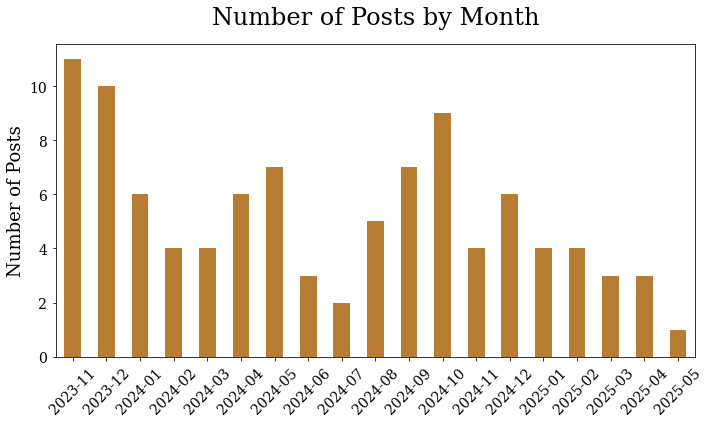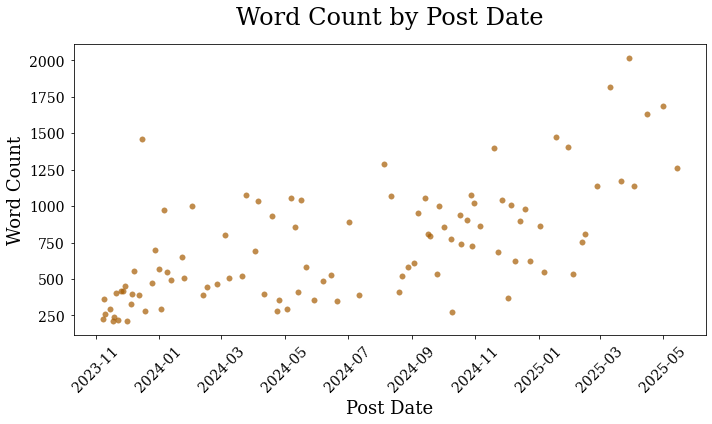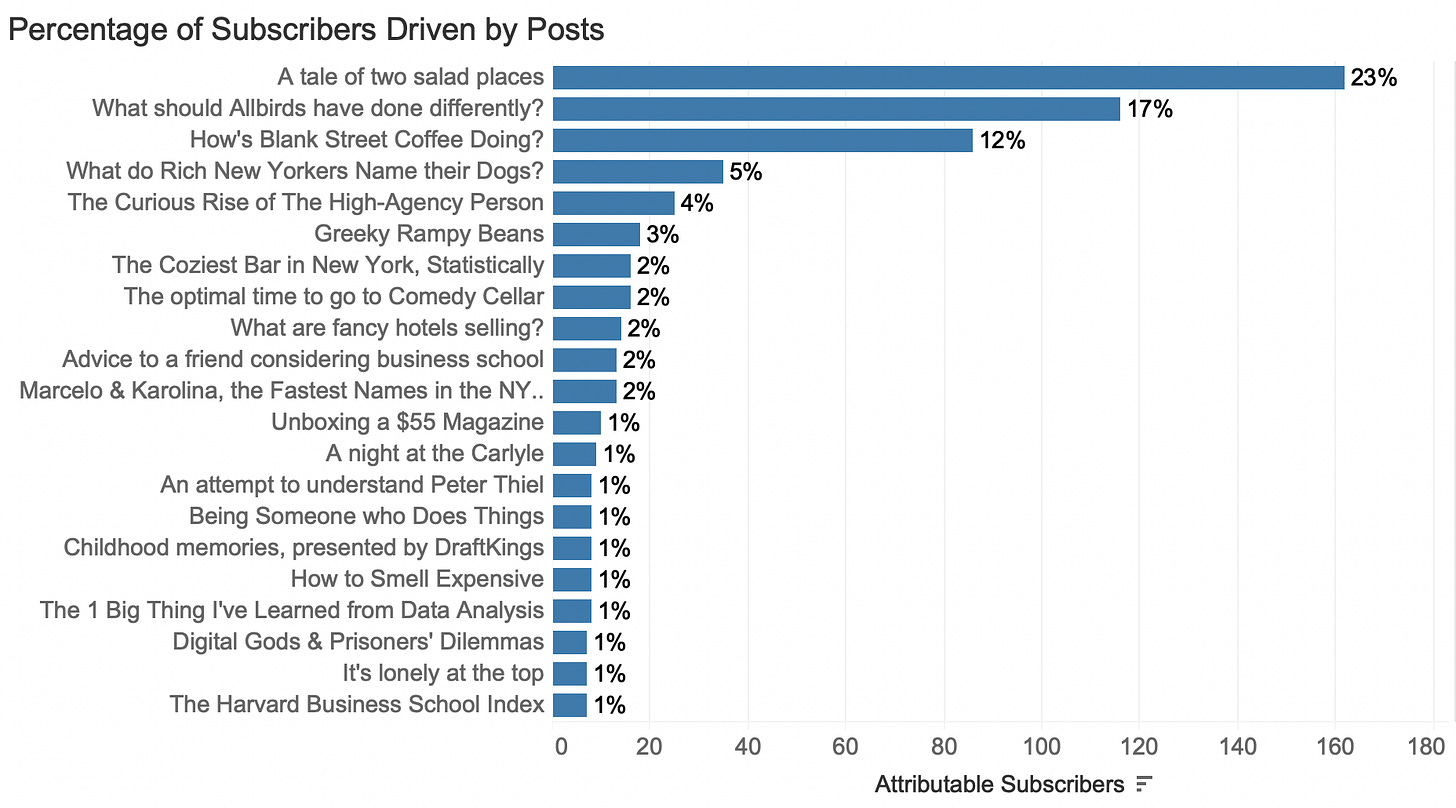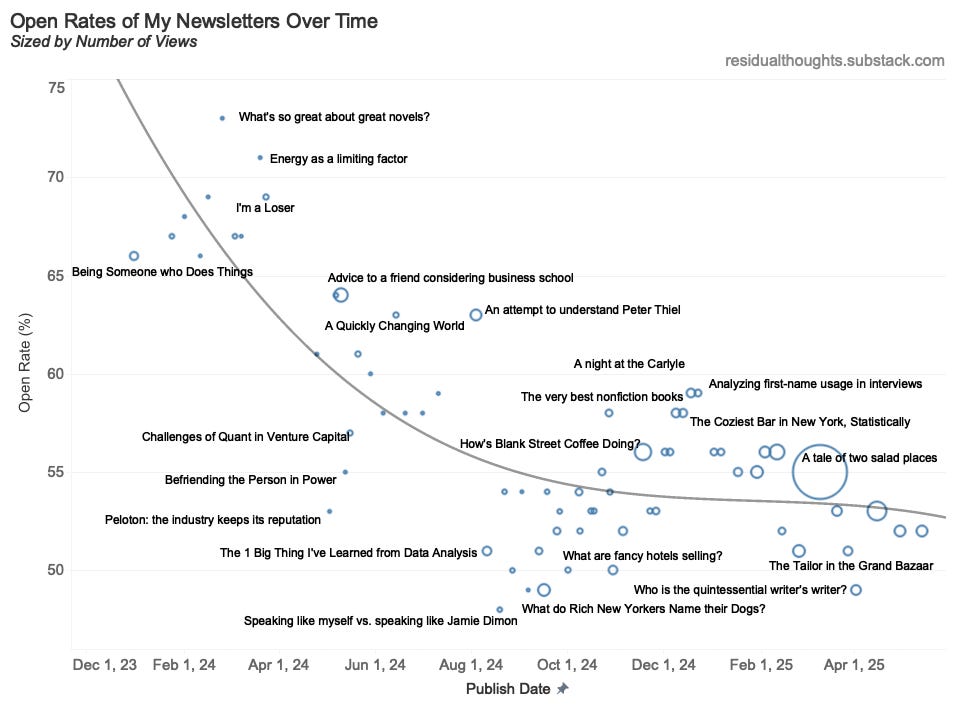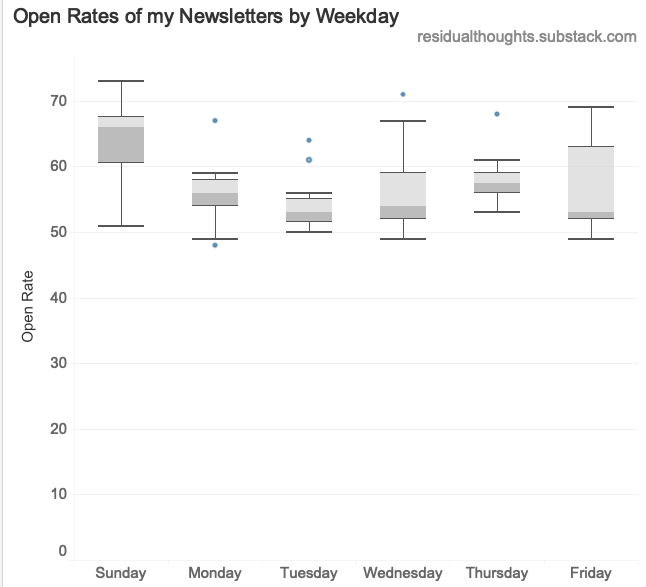I find Mr. Beast’s work aesthetically abhorrent, but he’s clearly the best in the world at what he does and I think this extremely LinkedIn post quoting him is excellent advice for creative endeavors:
So I’m excited that this is the 100th Residual Thoughts post! Thanks for being here. It took me a while to realize that studying the mechanics of an activity is overrated and just doing the thing over and over is the best way to improve at it and benefit from it. And I think that doing creative things is deeply beneficial psychologically, particularly as the world is realigning to remove friction from every single thing that you do.
Lots of interesting things have happened as a result of writing this newsletter and I thought it’d be fun to analyze it and share some learnings, in part to navel gaze and in part to encourage anyone interested in doing something similar. Here are my takeaways from 100 posts.
The biggest benefit of writing this is that it has made life in New York feel a lot more like the exciting, serendipitous place I’d romanticized it to be. It’s led to
Lots of coffees with interesting people, some of whom have become friends
Games of tennis without needing to fight for a court (thank you Carl!)
A few dinner parties with too much wine
Two fancy Knicks tickets (thank you Chopt!!!)
I’ve mostly thought of social media as a neutral-to-negative force in the world and it’s been refreshing & fun to experience some of the actual social benefits of substack’s interpretation of social media.
Having people read what you write is really fun, and I’m thankful to have had some success in growing an audience. If you look at the number of subscribers over time you can see inflection points driven by the power of
or the substack algorithm smiling upon an article:
Growth is intoxicating. It’s shaped how I write and how it feels. When I first started, I viewed this as a public journal, a place to catalog what I read and thought about (like this little note about a lesson from Robert Caro). As the audience has grown beyond my grandpa each email has felt higher stakes and I’ve been publishing fewer, longer articles:
I am happy with the tradeoff but it is a tradeoff. And right now basically everyone is nice (including well-intentioned people encouraging me to make my own salad) — if my audience were 100x bigger I expect each post would be a lot more stressful.
The biggest thing I’ve learned from analyzing data is how skewed most real-world distributions are and so this shouldn’t surprise me. But it’s still remarkable to see how stark it is. Substack can attribute ~700 subscribers to an individual post. 52% of these are from 3 articles: A Tale of Two Salad Places, What Should Allbirds Have Done Differently?, and How’s Blank Street Coffee Doing?
I’ve been careful to publish something at least once every two weeks because building a writing habit is the most important thing to me, and that would be my default advice to people. But based on the data I think
is right — if you mostly care about getting a lot of reach (and you know yourself well enough to know you’ll work hard without constant audience feedback), it’s probably better to spend a lot of time making something really great:
“I Spent 50 Hours In My Front Yard” is lame and you wouldn’t click it. But you would hypothetically click “I Spent 50 Hours In Ketchup” … a simple way to up that CTR even more would be to title it “I Survived” instead of “I Spent.” That would add more intrigue and make it feel more extreme. In general the more extreme the better. “I Don’t Like Bananas” won’t perform the same as “Bananas Are The Worst Food On Earth.”
Mr. Beast’s employee handbook
I’ve titled my articles a lot more like “I don’t like bananas” than “bananas are the worst food on earth.” I do this because I like nuance, and I think sensationalist headlines feel cheap, and I want the stuff I write to represent me well. But I am aware that titles & subject lines are extremely important for getting an article read, and so there is some balance to strike between sensational and outright boring.
As my audience has grown, the open rate has declined and seems to be leveling off around 52%. I certainly haven’t cracked the code for what type of titles work: I’m not sure, for example, why The 1 Big Thing I’ve Learned from Data Analysis underperformed while Analyzing First-Name Usage in Interviews overperformed.
Some of the best performing titles relative to trend are:
Some of the worst performing are:
I am not sure how much we can learn from these, because lots of factors beyond the copy matter: the day and time I sent the email, whether Substack is in or out of favor with Gmail’s sorting algorithm, whether Substack’s analytics are actually working, etc. But it seems like these things are important:
Does the title give the person a sense of what type of article it will be (while retaining some tension)? For example, you can guess the basic structure of “advice to a friend considering business school,” but there is still some mystery as to what the advice is.
Is the subject matter inherently interesting to a lot of the people getting the email? This seems obvious but I tend to just write about whatever I find interesting, so I should probably remember that most people aren’t as interested in Jamie Dimon’s public speaking style as I am, but a lot of people are curious about Peter Thiel and why he’s such a weird guy
People seem to like data and to know that a post will contain analysis — “the coziest bar in New York, Statistically” and “Analyzing first-name usage in interviews” are inherently analytical.
I don’t worry very much about when I send emails, but maybe I should do more Sunday stuff?
I have not directly financed my amaro habit through substack (and I actually don’t spend very much money on amaro). I have occasionally used affiliate links when linking to books or these wool slippers (which you should actually really buy), but it is not a viable way to make money with a small audience — I think I’ve made ~$20 from them in a year.
But indirectly, it’s been quite beneficial to my career to write like this. I’ve met lots of people in interesting industries and it’s brought some opportunities which could be lucrative. And I think I could experiment with premium subscriptions that would generate some money if that became important. It’s not my focus right now but is fun to think about and comforting as AI’s implications for hypothetical data analysts is quite unpredictable.
Anyway - thanks again for being here, and let me know if you have any questions about any of this; it’s been such a fun thing to work on and I hope more people do similar things!
I’ve been listening to Keith McNally’s book (the founder of Balthazar, one of the best places to people watch in new york) and really enjoying it; it’s sad and interesting and honest.
I was also very tickled by this article because framing large art is so absurdly expensive (I would personally be happy if we worked on that for a few years instead of AGI).
Have a lovely week!
.png)




